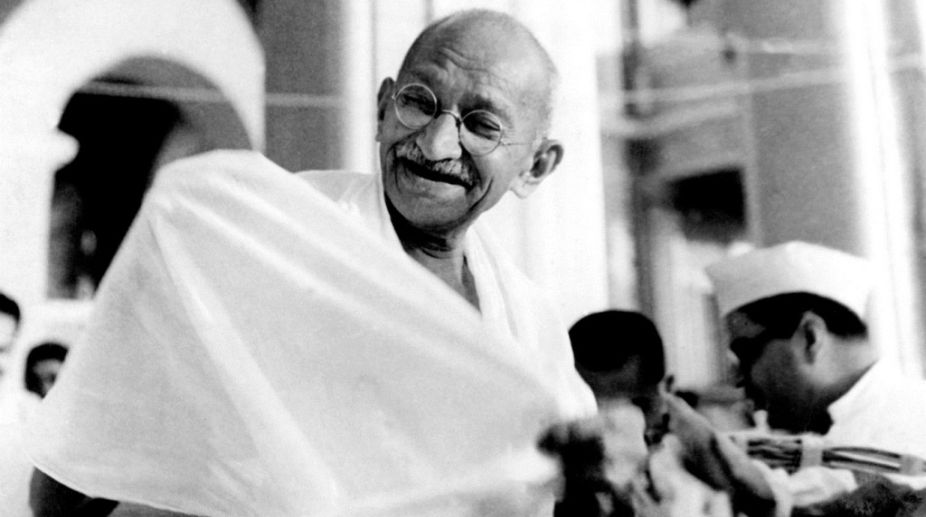By spinning a wheel in his Sabarmati Ashram, no one would have imagined that a simple man would spin the fate of malnourished, underprivileged and uneducated mass of people, trying to break the shackles of 200 years of British imperialism.
Draped in his Khadi shawl and dhoti, carrying a staff and showing a path to Indians, leaving their everything, unified for a single cause of a free India, Gandhi ensured that they all become part of the world’s largest and strongest democracy.
Advertisement
To quote Albert Einstein, “Generations to come, it may well be, will scarce believe that such a man as this one ever in flesh and blood walked upon this Earth.” Mahatma Gandhi, who evolved the philosophy of “Satyagraha” in South Africa and practised it successfully, landed at Bombay on 9 January 1915. And on 25 May 1915, in Ahmedabad at Kocharab in a bungalow, Gandhiji laid the foundation of “Satyagraha Ashram”, conveying both the goal and the method of service.
The Genesis
Gandhi, who was thrown off of a train in South Africa for refusing to move from his First Class seat to Third Class (even though he held a valid First Class ticket), knew that such discrimination against Indians was common practice and this personal experience gave him a reason to fight racial discrimination.
The first step towards an untouchability-free society was taken by Gandhi, when he himself admitted to Ashram an “untouchable” family of Dudabhi, his wife Danibehn and their daughter Laxmi, for which he faced strong opposition. All monetary help was stopped and even social boycott was threatened but Gandhi said, “In the very beginning we proclaimed to the world that the Ashram would not countenance untouchability.”
Gandhi conducted the Champaran Satyagraha and the strike of Ahmedabad mill-workers during this period. He left the Sabarmati Ashram on 12 March, 1930 with a vow “not to return to this Ashram till India became independent”.
He held consultations with the poorest of the poor and with the richest, the highest and the emissaries of the government. On 12 March 1930, at the age of 61 years, Gandhi travelled 320 km (200 miles) on foot for 24 days to Dandi to make his own salt, presenting a tough stand against the Britishers, who made it illegal for Indians to make their own salt.
Taking the final call on 8 August, 1942, Gandhi asked the Indians to “do or die” for poorna swaraj (complete Independence), by launching the Quit India Movement, as a result of which, India achieved Independence within a duration of five years.
Back to Future
Commemorating 75 years of Quit India Movement, Prime Minister Narendra Modi said, “The Independence struggle had seen people from all walks of life coming together. I urge lawmakers to rise above party lines and differences and contribute to India’s growth.”
To mark the occasion, the Lok Sabha unanimously passed a resolution promising to work tirelessly in the next five years to build the India of Mahatma Gandhi’s dream. It was read out by Speaker Sumitra Mahajan, “We, the representatives of more than 125 crore people, resolve to take along every citizen in working towards building a nation as envisioned by Mahatma Gandhi and other freedom fighters by 2022, when we will celebrate 75th anniversary of our Independence. We shall remain committed and dedicated to build a strong, prosperous, clean and glorious India, which is free of corruption. We are committed to the welfare of all sections and promote harmony and patriotism.”
Gandhi, a man who believed in dialogues, non-violence and truth, possessed the power to bring change in the society. To quote Gandhi himself, he told everyone, “You must be the change you wish to see in the world”.
It is very saddening when one realises that Gandhi is now limited only to currency notes or old history text books. To trap Gandhi and his Gandhivaadi beliefs would not only be insulting to a visionary but is also harmful to the vision of a free India. Gandhi lived his life on the 11 vows he had taken ~ truth, non-violence, swadeshi, fearlessness, removal of untouchability, Brahmacharya, control of the palate, non-stealing, non-possession and physical labour.
A country, once known as the Golden Bird, remained in the cage of imperialists for 200 years and when set free is still learning to fly high over the past 70 years. How far has India come and will go is very tough to say. But yes, Gandhivaad never failed to provide the light in the hours of darkness. As Gandhi said, “I feel and I have felt during the whole of my public life what we need, what a nation needs; but we, perhaps of all the nations of the world, need just now, is nothing else and nothing less than character building.”











